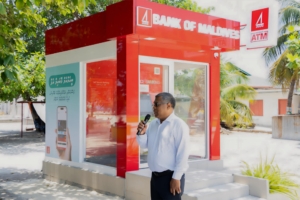Unites States – The Executive Board of the International Monetary Fund (IMF) have cautioned cautioned against central bank financing of the government and encouraged developing a comprehensive debt management strategy, coupled with public financial management reforms, to manage the risks from large infrastructure projects and state-owned enterprises.
The directors recommended this as part of the conclusion of the Article IV consultation with the Maldives.
The Executive Board assessment of the Maldives stressed the importance of ensuring fiscal and debt sustainability over the medium term. They noted that a combination of revenue and expenditure measures is needed to achieve a growth‑friendly fiscal consolidation.
… mobilize revenue and diversify the tax base toward domestic sources
IMF Executive Board
They also saw the need to develop contingency plans in case downside risks materialize.
They called for prudent and well-coordinated fiscal and monetary policies to safeguard macroeconomic stability, restore debt sustainability and sustain the current exchange rate peg, while supporting sustainable growth.
The IMF executive directors supported the Maldives Monetary Authority’s ongoing efforts to modernize monetary policy and the foreign exchange operations framework, including those aimed at eliminating exchange rate restrictions and multiple currency practices. They also welcomed the authorities’ prompt response to the pandemic as well as the rapid rollout of the COVID-19 vaccination program.
Maldives Overview from IMF Report
According to the IMF report, the Maldives economy is recovering after an unprecedented pandemic-induced fall in tourism. Real GDP contracted by 32 percent in 2020. Low aggregate demand, low oil prices, and price subsidies on utilities put inflation at -1.6 percent in 2020.
Growth is projected at about 19 percent in 2021, and medium-term prospects remain positive. Inflation is projected at 1.4 percent in 2021 and to increase to 2.3 in 2022 on the back of higher commodity and food prices. Nonetheless, fiscal and external positions are projected to remain weak over the medium term, underpinned by capital expenditure plans.
The total public and publicly guaranteed (PPG) debt-to-GDP ratio increased from 78 percent in 2019 to 146 percent in 2020, reflecting mostly the contraction in nominal GDP, but also an expansion in nominal debt. PPG debt is projected at 123 percent of GDP in 2026.
The risks to the outlook are tilted to the downside with COVID-19 variants increasing the possibility of a protracted global pandemic, expenditure and policy pressures related to the 2023 presidential electoral cycle, and the uncertainty of vaccine coverage in many source tourism economies.





